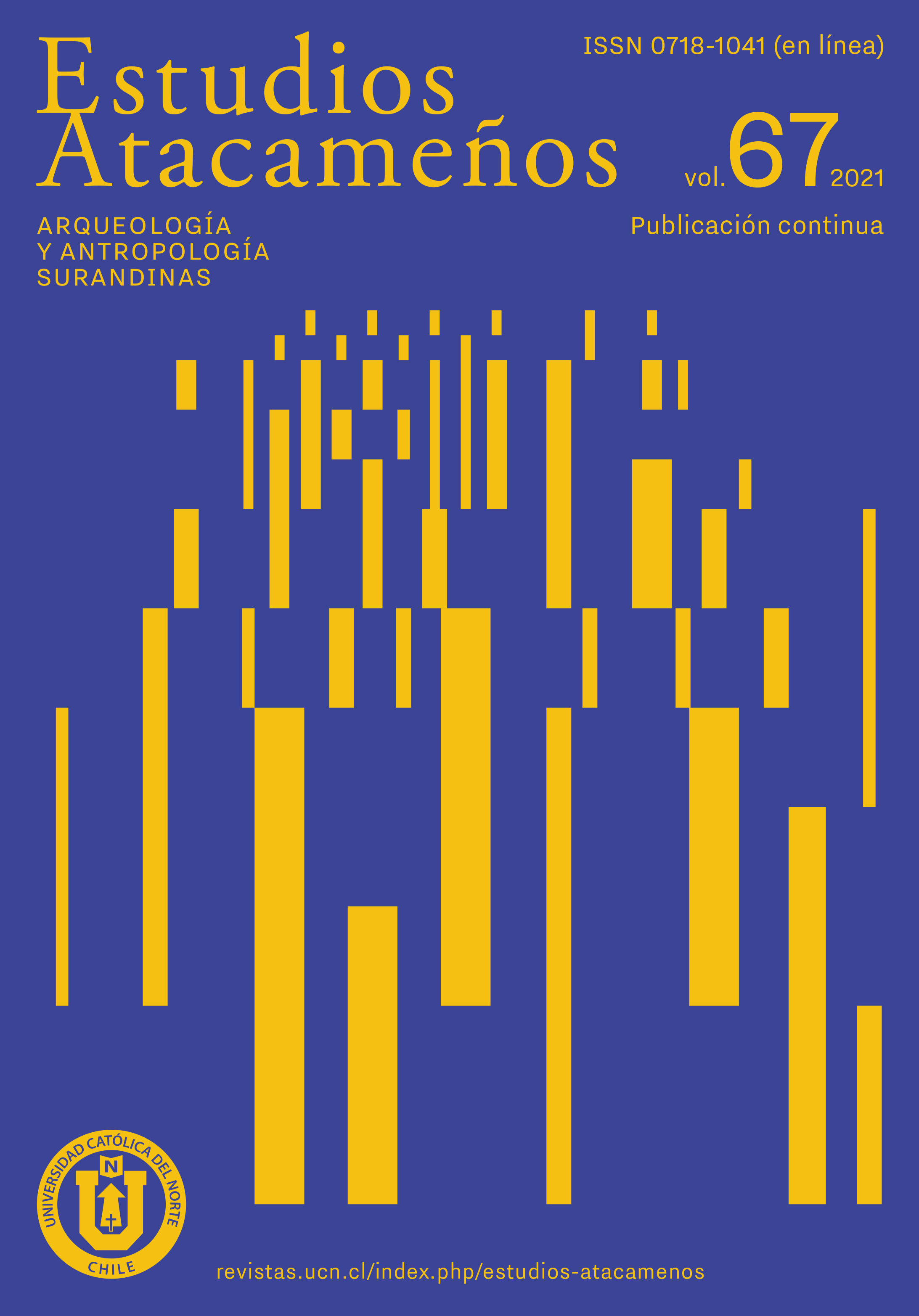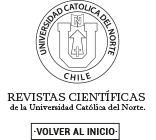Crucibles and moulds from Los Nogales
Technological study of technical ceramics from the Late Period in the Aconcagua Valley, Central Chile
DOI:
https://doi.org/10.22199/issn.0718-1043-2021-0008Keywords:
metallurgy, Late Period, petrography, SEM-EDS, XRDAbstract
The spread of the Tawantinsuyu in the Aconcagua Valley (Central Chile) is thought to have been culturally mediated, avoiding military coercion, and thus leading to different forms of cultural acceptance, resistance or hybridisation. However, very few studies have discussed how this process is reflected in the metallurgical production during the Late Period (ca. AD 1400-1530). The result of a technological study on a group of crucibles and moulds from Los Nogales (Aconcagua valley), using optical microscopy, petrography, SEM-EDS, XRD and FTIR is presented here. Results indicate that the raw materials used were local igneous rocks obtained from alluvial deposits, mixed with small amounts of smectite-montmorillonite clay. Moulds also contained bone ash as temper. Firing temperatures were estimated between 800-850 ºC for moulds and above 900 ºC for crucibles. Their manufacture technology and morphology indicate that these technical ceramics were made following a technological tradition originated in northwest Argentina that was introduced to the Aconcagua valley during the expansion of the Tawantinsuyu, and accepted by local communities.
Downloads
References
Arsad, M. S. M., Lee, P. M. y Mara, U. T. (2011). Synthesis and Characterization of Hydroxyapatite Nanoparticles and -TCP Particles, 7, 184-188.
Babot, M. del P. y Apella, M. C. (2003). Maize and bone: Residues of grinding in northwestern Argentina. Archaeometry, 1(45), 121-132.
Bárcena, R. (2001). Los objetos metálicos de la ofrenda ritual del Cerro Aconcagua. En Schobinger, J. (Ed.). El santuario incaico del cerro Aconcagua (pp. 281-301). Mendoza: EDIUNC Universidad Nacional de Cuyo.
Berzina-Cimdina, L. y Borodajenko, N. (2012). Research of Calcium Phosphates Using Fourier Transform Infrared Spectroscopy. En Theophanides, T. (Ed.). Infrared Spectroscopy – Materials Science, Engineering and Technology (pp. 123-148). Rijeka: Web of Science. https://www.intechopen.com/books/infrared-spectroscopy-materials-science-engineering-and-technology/research-of-calcium-phosphates-using-fourier-transformation-infrared-spectroscopy
Cabeza, Á. (1986). El santuario de altura Cerro El Plomo. Tesis de grado para optar al título de Licenciado en Arqueología y Prehistoria de Chile. Departamento de Antropología, Universidad de Chile. Memoria Chilena. http://www.memoriachilena.gob.cl/602/w3-article-336337.html
Campbell, R. y Latorre, E. (2003). Rescatando una materialidad olvidada: Síntesis, problemáticas y perspectivas en torno al trabajo prehispánico de metales de Chile Central. Boletín de la Sociedad Chilena de Arqueología, 35/36, 47-61.
Campo, P. (2001). Interpretando los fragmentos de refractarios del poblado prehispánico de Rincón Chico, Catamarca. En Actas del XIV Congreso de Arqueología Argentina, (pp. 15-24). Universidad Nacional de Rosario.
Cantarutti, G. E. (2013). Mining Under Inca Rule in North-Central Chile: The Los Infieles Mining Complex. En Tripcevich, N. y Vaughn, K. J. (Eds.). Mining and Quarrying in the Ancient Andes: Sociopolitical, Economic, and Symbolic Dimensions (pp. 185-211). New York: Springer. https://doi.org/10.1007/978-1-4614-5200-3_9
Cole, S. (1935). The conversion of quartz into cristobalite below 1000°c, and some properties of the cristobalite formed. Journal of the American Ceramic Society, 18(1-12), 149-154.
Dávila, C. (2010). Análisis Cerámico del Sitio Los Nogales. Comuna de San Esteban, V región. Informe de Análisis Cerámico inédito, Proyecto Fondecyt 1090680. Ms.
Debenedetti, S. (1916). Investigaciones arqueológicas en los valles preandinos de la provincia de San Juan. Revista de la Universidad de Buenos Aires, 15, 122-167.
Durán, E., Rodríguez, A. y González, C. (2000). El Coligüe: Un asentamiento incaizado (Cuesta de Chacabuco, Chile Central). En Actas del XIV Congreso Nacional de Arqueología Chilena, Copiapó 1997, 2 (pp. 223-250). Editores Tamarugal.
Ewbank, T. (1855). Appenix E. A description of the Indian Antiquities brought from Chile and Peru, by the U.S. Naval Astronomical Expedition. En Gillis, J. M. (Ed.). The U.S. Naval Astronomical Expedition to the Soythern Hemisphere during the years 1849-’50-’51-’52. Vol. II (pp. 110-150). Washington DC: Harvard College Library.
Figueroa-Larre, V., Mille, B., Salazar, D., Berenguer, J., Menzies, A., Sapiains, P., Cifuentes, A. y Delphine, J. (2018). A major prehispanic copper production center identified at Collahuasi, southern Tarapacá Altiplano (Chile). Chungara. Revista de Antropología Chilena, 50(4), 557-575.
Fonck, F. (1910). La rejión pre-histórica de Quilpué y su relación con la de Tiahuanacu. Estudio arqueológico basado en la colección del autor exhibida en la Esposición Histórica del Centenario. Valparaíso: Sociedad Imprenta y Litografía Universo.
Gajardo-Tobar, R. y Silva, J. (1970). Notas sobre arqueología de Quillota. Excavaciones en el estadio. Anales del Museo de Historia Natural de Valparaíso, 3, 203-236.
Garceau, C., MacRostie, V., Labarca, R., Rivera, F. y Stehberg, R. (2010). Investigación arqueológica en el sitio Tambo Ojos de Agua. Cordillera de Aconcagua. En Actas del XVII Congreso Nacional de Arqueología Chilena, Valdivia 2006, 1 (pp. 351-363). Sociedad Chilena de Arqueología.
Gluzman, G. (2017). Caracterización morfológica y funcional de moldes y crisoles del sitio 15 de Rincón Chico, Provincia de Catamarca. En Rocchietti, A., Ribero, F. y Reinoso, D. (Eds.). Investigaciones arqueométricas: Técnicas y procesos (pp. 77-89) Buenos Aires: Aspha.
González, C. (1998). ¿Funebria incaica o de yanaconas en Chile Central? La problemática de las adscripciones tempo-culturales. Boletín Sociedad Chilena de Arqueología, 25, 31-36.
González, L. R. (1997). Cuerpos ardientes. Interacción surandina y tecnología metalúrgica. Estudios Atacameños, 14, 175-188.
González, L. R. (1998). Bronces bajo el sol. Metalurgia prehispánica en el noroeste Argentino. Etnologiska Studier, 43.
González, L. R. (2002a). A sangre y fuego. Nuevos datos sobre la metalurgia Aguada. Estudios Atacameños, 24, 21-37.
González, L. R. (2002b). Heredarás el bronce. Incas y metalurgia en el Sur del valle de Yocavil. Intersecciones en Antropología, 3, 55-68.
González, L. R. (2004). Bronces sin nombre. La metalurgia prehispánica en el Norte Argentino. Buenos Aires: Fundación Ceppa.
González, L. R. (2010). Fuegos sagrados. El taller metalúrgico del sitio 15 de Rincón Chico (Catamarca, Argentina). Boletín del Museo Chileno de Arte Precolombino, 15, 47-62.
González, L. R. y Gluzman, G. (2009). Agarráme si puedes. Métodos de sujeción de crisoles en el taller metalúrgico prehispánico del sitio 15 de Rincón Chico. Anuario de Arqueología, 1, 139-152.
González, L. R. y Tarragó, M. (2004). Producción tecnológica e identidad durante el dominio incaico en el Noroeste Argentino. Boletín de Arqueología PUCP, 8, 191-207.
Gosselain, O. P. (1992). Bonfire of the enquiries. Pottery firing temperatures in archaeology: What for? Journal of Archaeological Science, 19(3), 243-259. https://doi.org/10.1016/0305-4403(92)90014-T
Grim, R. y Kulbicki, G. (1961). Montmorillonite: High temperature reactions and classification. The American Mineralogist, 46, 1329-1369.
Hammer, F. y Hammer, J. (1993). The potter’s dictionary of materials and techniques (Third). Philadelphia, PA: University of Pennsylvania Press.
Hein, A., Gluzman, G. y Kilikoglou, V. (2018). Pre-Columbian metallurgy – Evidence of pyrotechnical ceramics from Rincón Chico, Northwestern Argentina (Andes). Journal of Archaeological Science: Reports, 21, 1163-1170. https://doi.org/10.1016/j.jasrep.2017.12.031
Hein, A., Gluzman, G. y Kilikoglou, V. (2015). Pre-columbian pyrotechnical ceramics from Argentina [Poster]. 13th European Meeting on Ancient Ceramics, Athens, Grecia.
Hein, A., Kilikoglou, V. y Kassianidou, V. (2007). Chemical and mineralogical examination of metallurgical ceramics from a Late Bronze Age copper smelting site in Cyprus. Journal of Archaeological Science, 34(1), 141-154. https://doi.org/10.1016/j.jas.2006.04.005
Hein, A., Müller, N. S., Day, P. M. y Kilikoglou, V. (2008). Thermal conductivity of archaeological ceramics: The effect of inclusions, porosity and firing temperature. Thermochimica Acta, 480(1), 35-42. https://doi.org/10.1016/j.tca.2008.09.012
Horta, H. (2008). Insignias para la frente de los nobles Incas: Una aproximación etnohistórica- arqueológica al principio de la dualidad. En González, P. y Bray, T. (Eds.). Lenguajes visuales de los Incas (pp. 71-89). Oxford: Archaeopress.
Horta, H. (2016). The chin adornment of the highland lords as a symbol of historical continuity and ethnic emblem in the Southern Andes (500-1600 AD.). Chungara. Revista de Antropología Chilena, 48(3).
Housse, R. (1960). Cementerios indígenas en el centro de Chile. Revista Universitaria, 23, 47-56.
Karageorghis, V. y Kassianidou, V. (1999). Metalworking and Recycling in Late Bronze Age Cyprus – the Evidence from Kition. Oxford Journal of Archaeology, 18(2), 171-188. https://doi.org/10.1111/1468-0092.00078
Koutsopoulos, S. (2002). Synthesis and characterization of hydroxyapatite crystals: A review study on the analytical methods. Journal of Biomedical Materials Research, 62(4), 600-612. https://doi.org/10.1002/jbm.10280
Latcham, R. (1928). La alfarería de Chile central. En La alfarería indígena chilena. Santiago: Sociedad Imprenta y Litografía Universo.
Latorre, E. (2006). Trabajo de metales tempranos en Chile Central. Werken, 8, 77-90.
Latorre, E. (2009). De adornos y herramientas nacidos del fuego: Una caracterización del trabajo de metales en la cultura Diaguita (c.a. 900-1536 d.C.). Memoria para optar al título de Arqueólogo. Facultad de Ciencias Sociales, Departamento de Antropología, Universidad de Chile. Repositorio Académico de la Universidad de Chile. http://repositorio.uchile.cl/handle/2250/106209
Latorre, E. y López, P. (2011). Los metales en la cultura Diaguita chilena metodológica e interpretativa. Intersecciones en Antropología, 12, 319-332.
Maggetti, M. (1982). Phase analysis and its significance for technology and origin. En Olin. J. S. y Franklin, A. (Eds.). Archaeological ceramics (pp. 121-134). Washington DC: Smithsonian Institution Press.
Maniatis, Y. y Tite, M. S. (1981). Technological examination of Neolithic-Bronze Age pottery from central and southeast Europe and from the Near East. Journal of Archaeological Science, 8(1), 59-76. https://doi.org/10.1016/0305-4403(81)90012-1
Maritan, L., Mazzoli, C., Nodari, L. y Russo, U. (2005). Second Iron Age grey pottery from Este (northeastern Italy): Study of provenance and technology. Applied Clay Science, 29(1), 31-44. https://doi.org/10.1016/j.clay.2004.09.003
Martínez, A. (2011). Reevaluación del sitio Cerro la Cruz. Su función en las estrategias de dominio incaico en el curso medio del Aconcagua. Memoria para optar al título de Arqueólogo. Facultad de Ciencias Sociales, Departamento de Antropología, Universidad de Chile]. Repositorio Académico de la Universidad de Chile. http://repositorio.uchile.cl/handle/2250/106350
Martínez, A. (2012). Reevaluación del sitio cerro La Cruz dentro de las estrategias de dominio incaico en el curso medio del Aconcagua. En Actas del XVIII Congreso Nacional de Arqueología Chilena, Valparaíso 2009 (pp. 433-440). Sociedad Chilena de Arqueología.
Martinón-Torres, M., Rehren, T., Thomas, N. y Mongiatti, A. (2009). Identifying materials, recipes and choices: Some suggestions for the study of archaeological cupels. En Archaeometallurgy in Europe (pp. 1-11). Milan: Associazione Italiana di Metallurgia (AIM).
Martinón-Torres, M., Thomas, N., Rehren, T. y Mongiatti, A. (2008). Some problems and potentials of the study of cupellation remains: The case of post-medieval Montbéliard, France. ArcheoSciences, 32(32), 59-70.
Mayer, E. F. (1986). Armas y herramientas de metal prehispánicas en Argentina y Chile. München: Verlag C.H. Beck.
Medina, J. T. (1882). La conquista Incásica. En Los Aborígenes de Chile (pp. 319-426). Santiago: Fondo Histórico y Bibliográfico José Toribio Medina.
Mostny, G. (1947). Un cementerio incásico en Chile Central. Boletín del Museo Nacional de Historia Natural, 23, 17-39.
Mostny, G. (1959). La momia del Cerro El Plomo. Boletín del Museo Nacional de Historia Natural, 27(1).
Niemeyer, H. (1979). Dos tipos de crisoles prehispánicos del Norte Chico, Chile. Boletín del Museo Arqueológico de La Serena, 17, 92-109.
Niemeyer, H. (1986). El Imperio Inka. Actualización y perspectivas por registros arqueológicos y etnohistóricos. Comechingonia, Número Especial, 169-237.
Nodari, L., Marcuz, E., Maritan, L., Mazzoli, C. y Russo, U. (2007). Hematite nucleation and growth in the firing of carbonate-rich clay for pottery production. Journal of the European Ceramic Society, 27(16), 4665-4673. https://doi.org/10.1016/j.jeurceramsoc.2007.03.031
Odriozola, C. y Hurtado, V. (2005). Tecnología y producción de decoraciones cerámicas campaniformes con relleno de hueso en la cuenca media del Guadiana. En Avances en Arqueometría. Actas VI Congreso Ibérico de Arqueometría (pp. 71-79). Universitat de Girona.
Odriozola, C. y Hurtado, V. (2007). The manufacturing process of 3rd millennium BC bone based incrusted pottery decoration from the Middle Guadiana river basin (Badajoz, Spain). Journal of Archaeological Science, 34(11), 1794-1803. https://doi.org/10.1016/j.jas.2006.12.021
Odriozola, C. y Martínez-Blanes, J. M. (2007). Estimate of firing temperatures through bone-based chalcolithic decorated pottery. Journal of Thermal Analysis and Calorimetry, 87(1), 135-141. https://doi.org/10.1007/s10973-006-7833-6
Ohya, Y. y Takahashi, T. (1999). Acoustic Emission from a Porcelain Body during Cooling. Communications of the American Ceramic Society, 82(2), 445-448.
Orton, C., Tyers, P. y Vince, A. (1997). La cerámica en Arqueología (R. Barceló y J. A. Barceló, Trads.). Barcelona: Crítica, Grijalbo Mondadori S.A.
Pavlovic, D. (2010). Informe preliminar salvataje sitio arqueológico Los Nogales comuna de San Esteban provincia de Los Andes V región de Valparaíso. Informe de salvataje arqueológico inédito, Proyecto Fondecyt 1090680. Ms.
Pavlovic, D., Sánchez, R., Pascual, D. y Martínez, A. Rituales colectivos y dinámicas de interacción. Sociedades segmentarias y el Tawantinsuyu en el Collasuyu Meridional. En Hayashida, F. y Troncoso, A. (Eds.). Rethinking the Inka Empire: New Perspectives from Collasuyu. Austin,TX: University of Texas Press (en prensa).
Pavlovic, D., Sánchez, R., Pascual, D., Martínez, A., Cortés, C., Dávila, C. y La Mura, N. (2019). Rituales de la vida y de la muerte: Dinámicas de interacción entre el Tawantinsuyu y las poblaciones locales en la cuenca del Maipo-Mapocho, Chile central. Estudios Atacameños. Arqueología y Antropología Surandinas, 63, 43-80. https://doi.org/10.22199/issn.0718-1043-2019-0022
Pavlovic, D., Troncoso, A., González, P. y Sánchez, R. (2004). Por cerros, valles y rinconadas: Investigaciones arqueológicas sistemáticas en el valle del Putaendo, cuenca superior del río Aconcagua. Chungara. Revista de Antropología Chilena, 36, 847-860. https://doi.org/10.4067/S0717-73562004000400025
Pavlovic, D., Troncoso, A., Sánchez, R. y Pascual, D. (2012). Un tigre en el valle. Vialidad, arquitectura y ritualidad incaica en la cuenca superior del río Aconcagua. Chungara. Revista de Antropología Chilena, 44(4), 551-570.
Pifferetti, A. (2004). Las cucharas de colada por el fondo en la metalurgia prehispánica. En Actas del Congreso CONAMET/SAM 2004. https://elcrisoluspt.files.wordpress.com/2008/09/crisoles.pdf
Plaza, M. T. (2010). Estudio sobre la metalurgia Incaica en Chile Central durante el Periodo Alfarero Tardío. Memoria para optar al título de Arqueólogo. Departamento de Antropología, Universidad de Chile. Repositorio Académico de la Universidad de Chile. http://repositorio.uchile.cl/handle/2250/106270
Plaza, M. T. (2013). Metallurgical traditions under Inka rule: A technological study of metals and ceramics from the Aconcagua Valley in Central Chile. Dissertation submitted in partial fulfilment of the requirements for the degree of MSc in Technology and Analysis of Archaeological Materials. UCL Institute of Archaeology, University College London.
Plaza, M. T. y Martinón-Torres, M. (2015). Metallurgical traditions under Inka rule: A technological study of metals and technical ceramics from the Aconcagua Valley, Central Chile. Journal of Archaeological Science, 54, 86-98. https://doi.org/10.1016/j.jas.2014.11.029
Pradell, T., González, L. R. y Gluzman, G. (2010). Estudios técnicos de materiales refractarios del Noroeste Argentino. En La arqueometría en Argentina y Latinoamérica (pp. 85-90). Editorial de la Facultad de Filosofía y Humanidades. Córdoba, Argentina: Universidad de Córdoba.
Quinn, P. (2013). Ceramic Petrography: The Interpretation of Archaeological Pottery and Related Artefacts in Thin Section. Oxford: Archaeopress.
Raffino, R., Iturriza, R., Iácona, A., Capparelli, A., Gobbo, D., Montes, V. y Vázquez, R. (1996). Quillay: Centro metalurgico inka en el noroeste argentino. Tawantinsuyu, 2, 59-69.
Rasmussen, K. L., De La Fuente, G. A., Bond, A. D., Mathiesen, K. K. y Vera, S. D. (2012). Pottery firing temperatures: A new method for determining the firing temperature of ceramics and burnt clay. Journal of Archaeological Science, 39(6), 1705-1716. https://doi.org/10.1016/j.jas.2012.01.008
Reimer, P. J., Bard, E., Bayliss, A., Beck, J. W., Blackwell, P. G., Ramsey, C. B., Buck, C. E., Cheng, H., Edwards, R. L., Friedrich, M., Grootes, P. M., Guilderson, T. P., Haflidason, H., Hajdas, I., Hatté, C., Heaton, T. J., Hoffmann, D. L., Hogg, A. G., Hughen, K. A., … Plicht, J. van der. (2013). IntCal13 and Marine13 Radiocarbon Age Calibration Curves 0–50,000 Years cal BP. Radiocarbon, 55(4), 1869-1887.
Rice, P. (2005). Pottery Analysis. A sourcebook [1987]. Chicago, IL: University of Chicago Press.
Rivas, P. y Ocampo, C. (1997). Informe preliminar de las excavaciones de salvataje y de la inspección arqueológica en el fundo Santa Augusta de Quintay, V región. En Actas del II Congreso Chileno de Antropología, Valdivia 1995, 2 (pp. 818-835). Colegio de Antropólogos de Chile.
Rivera-Muñoz, E. (2011). Hydroxyapatite based materials: Synthesis and characterization. En Fazel-Rezai, R. (Ed.). Biomedical Engineering: Frontiers and Challenges (pp. 75-98). Rijeka: IntechOpen.
Rodríguez, A. y González, C. (2000). Asentamiento humano con ocupaciones alfareras en torno a una piedra tacita. Montenegro, Chile Central. En Actas del XIV Congreso Nacional de Arqueología Chilena, Copiapó 1997, 2 (pp. 119-146). Editores Tamarugal.
Rodríguez, A., Morales, R., González, C. y Jackson, D. (1993). Cerro La Cruz: Un enclave económico administrativo incaico, curso medio del Aconcagua (Chile Central). En Actas del XII Congreso Nacional de Arqueología Chilena, Temuco 1991, 2 (pp. 201-221). Sociedad Chilena de Arqueología.
Salazar, D. y Salinas, H. (2008). Tradición y transformaciones en la organización de los sistemas de producción mineros en el norte de Chile prehispánico: San José del Abra, siglos I al XVI d.C. En Cruz, P. y Vacher, J.-J. (Eds.). Mina y metalurgia en los Andes del Sur desde la época prehispánica hasta el siglo XVII. Lima: Instituto Francés de Estudios Andinos.
Sánchez, R. (2002). El Tawantinsuyu Salvaje en el Finis Terrae Australis (Chile Central). Revista Chilena de Antropología, 16, 87-127.
Sánchez, R. (2004). El Tawantinsuyu en Aconcagua (Chile Central). Chungara. Revista de Antropología Chilena, 36(2), 325-336. https://doi.org/10.4067/S0717-73562004000200007
Schiegl, S., Goldberg, P., Pfretzschner, H. U. y Conrad, N. (2003). Paleolithic burnt bone horizons from the Swabian Jura: Distinguishing between in situ fireplaces and dumping areas. Areas Geoarchaeology: An International Journal, 18(5), 541-565.
Schobinger, J. (1995). Aconcagua. Un enterratorio incaico a 5.300 m de altura. Mendoza: Inca Editorial.
Schobinger, J., Ampuero, M. y Guercio, E. (2001). Descripción de las estatuillas asociadas al fardo funerario hallado en el Cerro Aconcagua. En Schobinger, J. (Ed.). El santuario incaico del cerro Aconcagua (pp. 266-280). Mendoza: EDIUNC Universidad Nacional de Cuyo.
Sernageomin (2003). Mapa geológico de Chile: Versión digital. Publicación Geológica Digital, 4, 1-25.
Stehberg, R. (1975). Diccionario de sitios arqueológicos de Chile central. Publicación Ocasional del Museo Nacional de Historia Natural de Santiago, 17, 1-96.
Stehberg, R. (1976). La Fortaleza de Chena y su relación con la ocupación incaica de Chile Central. Publicación Ocasional del Museo Nacional de Historia Natural de Santiago, 23, 1-37.
Stehberg, R. (1977). Reflexiones acerca de la fortaleza Inca de Chena. Revista de Educación, 62, 46-51.
Stehberg, R. y Sotomayor, G. (1999). Cabis, guacas-fortalezas y el control incaico del valle de Aconcagua. Estudios Atacameños, 18, 237-248.
Stilborg, O. (2001). Temper for the sake of coherence: Analyses of bone- and chaff-tempered ceramics from Iron Age Scandinavia. European Journal of Archaeology, 4(3), 398-404. https://doi.org/10.1179/eja.2001.4.3.398
Tite, M. S., Freestone, I., Meeks, D. y Bimson, M. (1982). The use of scanning electron microscopy in the technological examination of ancient ceramics. En Olin, J. S. y Franklin, A. (Eds.). Archaeological ceramics (pp. 109-120). Washington, DC: Smithsonian Institution Press.
Troncoso, A., Pavlovic, D., Acuto, F., Sánchez, R. y González, C. (2012). Complejo arquitectónico Cerro Mercachas: Arquitectura y ritualidad incaica en Chile Central. Revista Española de la Antropología Americana, 42(2), 293-319.
Walter, T., Paine, R. y Horni, H. (2004). Histological examination of bone-tempered pottery from mission Espıritu Santo (41VT11), Victoria County, Texas. Journal of Archaeological Science, 31, 393-398.
White, H. (2010). Legge’s Mount, The Tower of London, London. Scientific examination of the cupels. Technology Report. London: English Heritage.
Wolf, S. (2002). Estimation of the Production Parameters of Very Large Medieval Bricks from St. Urban, Switzerland. Archaeometry, 44(1), 37-65. https://doi.org/10.1111/1475-4754.00042
Yanik, G., Bozer, R., Çeken, M., Esenli, F. y Gocmez, H. (2012). The characterization of medieval ceramics excavated from the Eğirdir Caravanserai (Turkey). Ceramics – Silikáty, 56(3), 261-268.
Zori, C. (2018). Inca mining and metal production. En Alconini, S. y Covey, A. (Eds.). The Oxford Handbook of The Incas (pp. 375-393). New York, NY: Oxford University Press.
Zori, C. (2019). Extracting Insights from Prehistoric Andean Metallurgy: Political Organization, Interregional Connections, and Ritual Meanings. Journal of Archaeological Research, 1-56. https://doi.org/10.1007/s10814-019-09128-7
Zori, C., Tropper, P. y Scott, D. (2012). Copper production in late prehispanic northern Chile. Journal of Archaeological Science, 40(2), 1165-1175. https://doi.org/10.1016/j.jas.2012.09.012
Downloads
Published
Issue
Section
License
Copyright (c) 2021 María Teresa Plaza, Daniel Pavlovic, Marcos Martinón-Torres

This work is licensed under a Creative Commons Attribution 4.0 International License.

All works published in Revista Estudios Atacameños (ISSN on line:0718-1043) Revista Estudios Atacameños Creative Commons International 4.0 attribution (CC BY 4.0) licence.
Authors remain the owners of their work and may republish their articles elsewhere without having to request permission, as long as they indicate that the work was originally published in Revista Estudios Atacameños (ISSN on liine:0718-1043).












